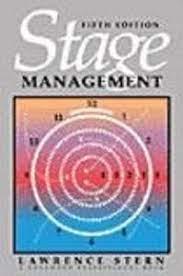Question
In 2019, the average annual expenditure on cheese was $94 per household. On average, each Canadian consumes about 15.65 kilograms of cheese on an annual
In 2019, the average annual expenditure on cheese was $94 per household. On average, each Canadian consumes about 15.65 kilograms of cheese on an annual basis as of 2019, up from 12 kilograms in 2004. Consumers in Canada show a clear preference for unprocessed cheese. Other relevant facts 2020: There are 12.4 Million households in Canada. 95% of households buy cheese. Although the average Canadian household spends $94 per year on cheese, 10% of Canadian families spend over $500 per year on cheese. An additional 20% spend $200 - $500 per year on cheese. Moderate and heavy cheese consumers usually have 3 - 4 different cheeses open at any given time. The pandemic has created changes in people's buying habits, with many Canadians purchasing more items in a single shop that was previously the case, to avoid repeat outings to grocery stores. One of the 1 - 2 packages of cheese per shop. Now they are purchasing 3 - 6 per shopping trip or more. Cheese will last for weeks, sometimes months if vacuum sealed. Once the package has been opened, however, mold can set in within two weeks if the product is properly resealed and refrigerated. Prior to COVID-19, it was estimated that approximately 5- 7% of cheese purchased is discarded because it goes moldy before the package can be full- consumed. Cheese producers will often store cheese for months before shipping. About 2% of shipped cheese is discarded because of mold that forms as a result of problems with transportation, handling at the retailer and, etc. These losses are usually borne by the cheese manufacturer. About the product It is a disk, about the size and thickness of a quarter, made from a special polymer that reduces the likelihood that mold will form on cheese. For hard cheeses, it can extend the life of an open package from two weeks to eight weeks or more, virtually guaranteeing that the product can be consumed before mold forms. For soft cheeses, it can extend the life of an open package from one week to four weeks or more. In laboratory testing, as well as in in-field (i.e. in peoples' homes and with two well-known cheese manufacturers) testing, it was shown the discs could be reused at least 20 times. After washing a disk, all a consumer needs to do to reactivate the disk, is to pour boiling water over the disk and let it sit for five minutes. The company is also manufacturing larger discs that can be included in shipping containers to reduce the likelihood of mold forming during transport and handling at the retail end. The average wholesale value of shipped cartons: $100. There is no other product like this on the marketplace and the Canadian company bringing it to market holds the patent. You do not need to do research to confirm this; it is a guaranteed fact. Year One, one-time, fixed costs: $10,000. Total manufacturing and ALL other related overhead costs: $0.50 for small disk and $1.50 for large disk if produced in quantities of at least 1,000 per run. Packaging costs for small disks (materials and sealing disks in packages): $0.50 for singles and 0.75 for packs of 3. Large disks: $1.00 per 5-pack, $1.50 per 10-pack. Marketing budget for Year One: $100,000. Your Task To identify the key target audience(s) for this product and determine how to price the discs for each audience. You need to provide a rationale for your choice.
Step by Step Solution
There are 3 Steps involved in it
Step: 1

Get Instant Access to Expert-Tailored Solutions
See step-by-step solutions with expert insights and AI powered tools for academic success
Step: 2

Step: 3

Ace Your Homework with AI
Get the answers you need in no time with our AI-driven, step-by-step assistance
Get Started


